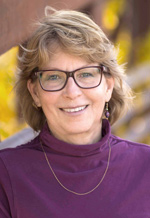By CINDY SALO
Guest Columnist
 I recently found a photo of my great-great-grandfather in a book about Noblesville. The book was on a table at the BBQ restaurant in Sheridan, where I was waiting for a pulled pork sandwich. As the oldest man in the county at the time, Clark Millikan helped cut the cake at Hamilton County’s centennial celebration in 1923. In the photo, he leans on a stout cane and wears a heavy coat.
I recently found a photo of my great-great-grandfather in a book about Noblesville. The book was on a table at the BBQ restaurant in Sheridan, where I was waiting for a pulled pork sandwich. As the oldest man in the county at the time, Clark Millikan helped cut the cake at Hamilton County’s centennial celebration in 1923. In the photo, he leans on a stout cane and wears a heavy coat.
In this bicentennial year, I’m in Hamilton County inheriting great-great-grandfather’s farm near Sheridan. Clark Millikan and my great-great grandmother are still here. So are my great-grandparents and my grandmother. They’ll all in the cemetery across the road from the farm, watching to see what I do with the land.
I fell in love with my grandmother’s farm when we visited from Minneapolis for six weeks in 1962. That memorable summer set me on my path to ag school, working on dairy farms, graduate school, and a career in agricultural research.
To ensure that “Millikan Farm” stays a farm forever, I’m working with a land trust to put an agricultural conservation easement on the land. The easement will add a restriction to the deed that prevents the land from being developed for residential or commercial use. This will reduce the value of the land and make it easier for farmers to buy, as they won’t be competing with developers.
There are various ways for landowners to recoup the reduced value of land with an ag easement. Donating an easement is considered a charitable deduction under U.S. tax law, which can offset taxes due.
Agricultural conservation easements can also be sold – if a buyer can be found. In the West, where I live, buyers include some government agencies, nonprofits, and local governments. These entities pay for easements for various reasons. These include protecting habitat for endangered species, preserving open space, or maintaining the rural character of an area.
I’m spending this summer learning about agricultural easements, funding for easements, and farmland preservation in Indiana. I’m also learning that other people have the same questions I do. We can all learn together in Sheridan on Saturday morning, July 29. The Sheridan Historical Society Museum is hosting a conversation about Farmland Preservation in Indiana from 10 a.m. to noon, with coffee at 9:40.
We’ll get a primer on agricultural conservation easements, hear about the Natural Resource Conservation Service’s program for funding easements, and learn how the American Farmland Trust can help landowners protect farmland. We’ll also learn what local and state governments can do to help preserve farmland. Please join us.
Cindy Salo is a plant ecologist who studies army cutworms in the intermountain west and writes about research and agriculture from rural Idaho and Arizona. See more at CindySalo.com.


Way to go, Cindy. I admire you for your spirit. We need more people who work their land because they love it and love doing the work. Far too few of us recognize the value in doing that. Keep up your good work.
Great to see you doing this, Cindy!
Cheers to you Cindy! Preserving your great-great grandfather’s farmland is monumental.
Best to you and all your endeavors.